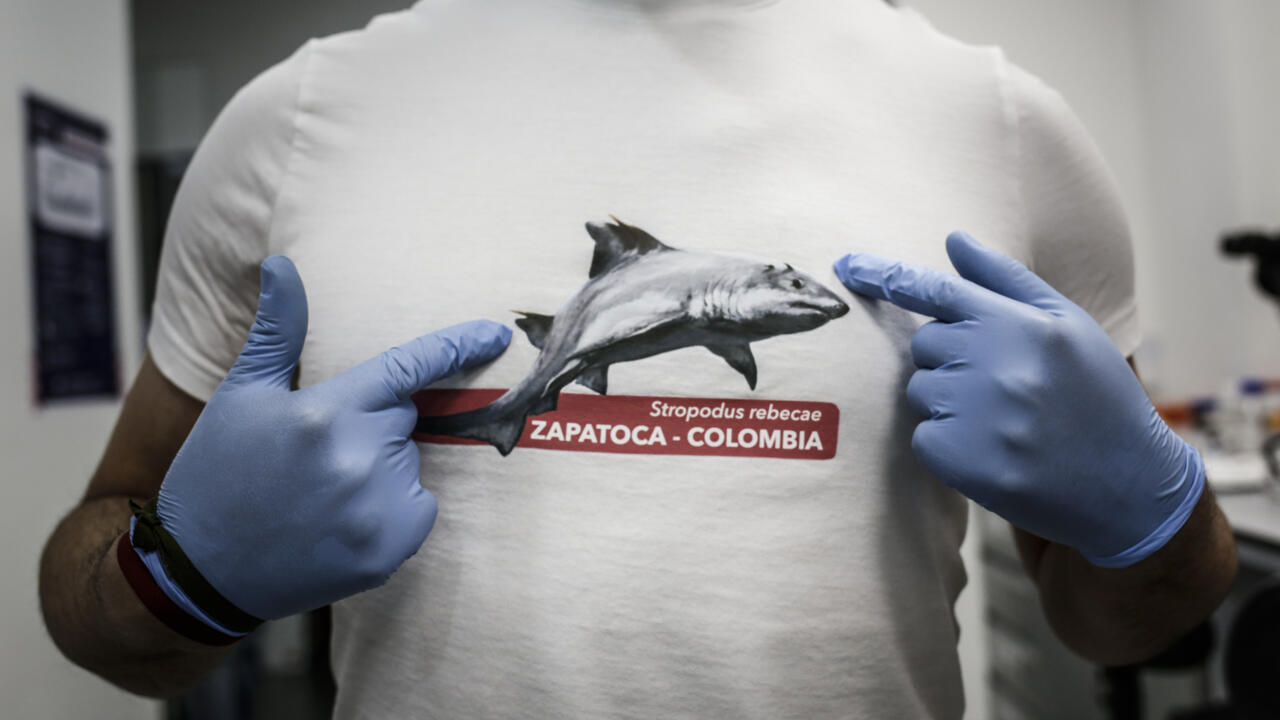These fossils of the species called "Strophodus rebecae" were discovered in Zapatoca, about 250 km north of Bogota.
Studies reveal that he lived 135 million years ago in this submerged part of the South American continent.
It was between four and five meters long and had domino-like teeth, which were used to crush food rather than to cut and tear like today's sharp-toothed sharks, according to paleontologists.
Edwin Cadena, from the University of Rosario in Bogota, and Jorge Carrillo, from the University of Zurich in Switzerland, worked for almost ten years in the region on this discovery.
Paleontologist Edwin Cadena observes a shark fossil under a microscope on June 9, 2022 in Bogota Juan Pablo Pino AFP
"There are many individuals, fossils found in different places in the Zapatoca region, which we are sure belong to the same species," Cadena explained.
It is also the first trace of a fish of the family Strophodus in the southern hemisphere of the planet, called Gondwana, which was then composed of South America, Africa, Australia , India and Antarctica.
"There are traces of the same kind in North America and in Europe, in particular in Germany and Switzerland (...) but these are the first of all this group of sharks for the southern part of the planet at this time" , detailed Mr. Cadena.
In the sea of the time, "these sharks very probably had an important ecological role because with their teeth they could crush prey such as fish, but also invertebrates and, at the same time, serve as prey for large reptiles that were in this environment, thus generating an ecological control of the ecosystem", still according to Mr. Cadena.
Shark fossils on June 9, 2022 in Bogota Juan Pablo Pino AFP
The fossils belong to the paleontological collection of the University of Rosario.
A museum for their exhibit is being built in Zapatoca.
The scientific journal PeerJ published the Colombian study.
Mr Cadena discovered in 2020 the first fossils of a pterosaur in the country, flying reptiles from the Mesozoic era (between 251 million and 65.5 million years BC) made famous by the film Jurassic Park.
© 2022 AFP

